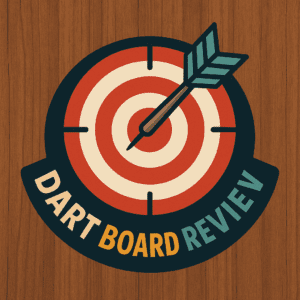Darts: A Fun and Accessible Game for All
Darts is an enjoyable game that anyone can play. Whether you’re just starting or looking to refine your skills, here are some essential tips to help beginners master the basics.
Getting Started with Darts
Before playing darts, it’s important to understand the equipment and setup.
The Basics
To play darts, you’ll need two things:
- A dartboard
- A set of darts
Choosing the Right Dartboard
There are two main types of dartboards:
| Type | Material | Best For |
|---|---|---|
| Bristle | Natural fibers | Home games and pub use |
| Electronic | Plastic | Scoring practice and casual games |
Selecting Darts
Darts come in various shapes and weights. Beginners should start with medium-weight darts, typically around 20 grams. As you improve, experiment with different weights to find what works best for you.
Setting Up Your Dartboard
Proper setup is essential for an enjoyable game:
- Dartboard Height: The center of the bullseye on the board should be positioned at a height of 5 feet 8 inches above the floor.
- Throw Line: Mark a line at a distance of 7 feet 9.25 inches from the dartboard.
Learning the Rules
Understanding the basic rules of darts ensures a smooth and fun experience.
Scoring Basics
- The dartboard is divided into sections, each worth different points.
- Outer ring: Double points
- Inner ring: Triple points
- Bullseye:
- Outer bullseye: 25 points
- Inner bullseye: 50 points
Starting the Game
To decide who goes first, each player throws one dart. The player with the highest score starts. Players then alternate turns, each throwing a set of three darts.

Credit: m.youtube.com

Credit: dartsplanet.tv
Mastering the Basics of Throwing
A good throwing technique is key to improving accuracy.
- Grip: Hold the dart with three fingers: the thumb, index, and middle. Ensure your grip is firm yet relaxed, avoiding excessive tightness.
- Stance: Stand with your feet shoulder-width apart, with your body angled slightly. Keep your dominant foot forward.
- Aim: Focus on your target and use your dominant eye to align the shot.
- Throw: Move your arm smoothly backward and forward, releasing the dart gently. Extend your arm fully after releasing.
Tips to Improve Your Game
Practice Regularly
Consistent practice is the best way to improve. Dedicate time each week to refine your technique and aim.
Practice Games
Try games like “Around the Clock,” where the goal is to hit every number from 1 to 20 in order before aiming for the bullseye.
Play with Friends
Playing with friends makes the game more enjoyable and helps you learn from each other.
- Encourage one another
- Share tips and tricks
- Keep the competition lighthearted and fun
Join a Darts League
Once you’re confident in your skills, consider joining a darts league. This allows you to meet new people, play regularly, and learn from experienced players.
Avoiding Common Mistakes
Beginners often make these mistakes:
- Throwing Too Hard: Focus on a smooth throw instead of power.
- Not Aiming: Always take a moment to aim before throwing.
- Poor Grip: Ensure you’re holding the dart correctly for better control.
Frequently Asked Questions
What Is Dart Programming Language?
Dart is a programming language developed by Google for creating web, server, and mobile applications.
How Do I Install Dart?
Visit the official Dart website to download and install it. Follow the step-by-step instructions provided.
What Can Dart Be Used For?
Dart is highly versatile, renowned for creating fast and efficient applications across multiple platforms.
Is Dart Easy to Learn?
Yes, Dart is beginner-friendly, with a simple syntax and excellent documentation.
Conclusion
Darts is a simple yet engaging game that anyone can enjoy. By understanding the basics, practicing regularly, and playing with friends, you’ll quickly improve your skills. So grab a dartboard, gather some friends, and start enjoying this timeless game!
